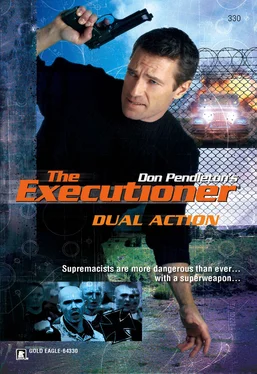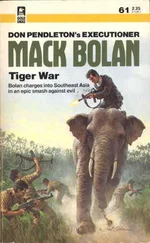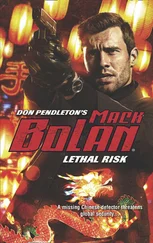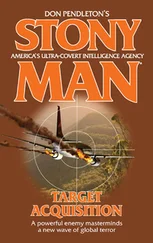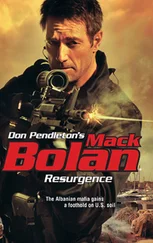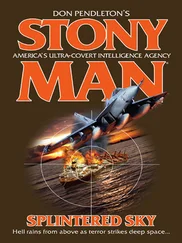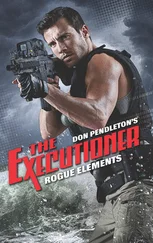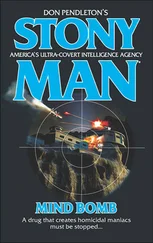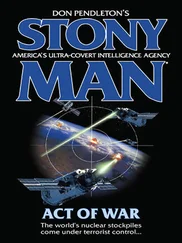“When we connect the dots, that’s where they lead.”
“No inside information, though?”
The man from Justice shook his head. “So far, the ARM has been impervious to infiltration. Strict security, including polygraphs for all prospective members and alleged initiation ceremonies that would compromise a law-enforcement officer.”
“Participation in some criminal activity,” Brognola said. “The rumors range from strong-arm robbery to murder.”
“No defectors? Rejects who tried out but didn’t make the cut?”
“None we’re aware of,” Price replied. “It makes us…curious.”
“Okay,” Bolan said, nodding toward the fat manila folder resting on the table. “I’d better read that file.”
BROGNOLA HAD FLOWN back to Washington after the briefing, leaving Barbara Price and her team at Stony Man to answer any questions Bolan had after he’d read the dossier on Walgren and the ARM.
Bolan had one question that he wouldn’t have asked Brognola, in any case. “What do you really think about this mission, Barb?”
She frowned and told him, “Everybody from the Pentagon to Pennsylvania Avenue has been looking for this supergun. It wasn’t high priority while they were looking in Baghdad, but now someone has brought the war home to the States. Right now, the ARM is what we’ve got, in terms of leads. It’s something, and we need to run it down.”
“I see the group’s suspected in a string of cases, going back to its foundation, in Missouri.”
“Right.” She nodded. “Stickups in the early days. Some bombings—an abortion clinic, gay bars, a Missouri synagogue. Some deaths and disappearances. No charges ever stuck.”
In fact, as Bolan knew, few charges had been filed. Two members of the ARM had been indicted for the synagogue attack, but jurors had acquitted them after a witness changed her testimony. Several deaths and disappearances had been connected to the group—including the peculiar “suicide” of Walgren’s predecessor, hanged with hands duct-taped behind his back—but no indictments had been filed.
“Could be a hornet’s nest,” he said, “or a wild-goose chase.”
“You don’t like to waste the time.”
“It’s not a waste if it pays off. But I’d feel better if we had a pair of eyes inside.”
“The Bureau tried, back in the day,” she said.
He’d seen that in the file. One of the missing persons theoretically connected to the ARM had been an FBI informant who dropped out of sight soon after he applied for membership. Headquarters still suspected Walgren’s people had disposed of him, but they had never found the body, and their spy had also irritated heavy hitters from at least two other far-right paramilitary groups along the way. His death could be attributed to any of those enemies.
No evidence, no case.
“I guess there’s only one way to find out,” the warrior said at last.
“When are you heading out?” she asked.
“First thing tomorrow. Have a look around the place tomorrow night, then pop in for a visit the day after.”
“What’s Plan B, if you don’t find the supergun?”
“I’ve got some names and addresses,” Bolan said. “If I can’t grab someone from the compound for a chat, I’ll work my way around the circuit. It’s a small world, on the fringe.”
“Still easy to get lost in,” Price said.
“I’ll light a candle,” Bolan told her. “Maybe leave a trail of bread crumbs.”
“Just so you come back.”
“That’s always in the plan.”
She didn’t tell him what they both already knew, that best-laid plans often went sour during life-or-death engagements with the enemy. She didn’t have to say it, since that message was tattooed on Bolan’s soul, and on her own.
“Tomorrow early, then,” she said.
“The proverbial crack of dawn. I’ve got a flight out of Fort Pickett at seven o’clock, to Camp Robinson outside North Little Rock.”
“You need your rest, then.”
Bolan shrugged. “I don’t mind sleeping in the air.”
“I think you ought to be in bed.”
His smile was cautious. “Do you want to go upstairs?”
“I thought you’d never ask.”
Bolan’s secondary target lay across the Arkansas-Missouri line, some thirty miles away, at Poplar Bluff. The man he wanted was a gunsmith for the ARM, one Neville Alan Hoskins. Friends called him “Chopper,” in homage to his fondness for machine guns, but rumors persisted that certain jailhouse wolves had dubbed him “Nellie” when he pulled a five-spot in Atlanta, for weapons and explosives violations.
Federal dossiers named Hoskins as an ARM member who stayed “in the world,” conducting business of a sort in mainstream society while serving the cause when he could. Rumor had it that his services included the purchase of banned weapons and conversion of semiautomatic civilian arms to full-auto illegals, but no such charges had been proved since his emergence from the pen.
From all outward appearances, Hoskins and his small appliance repair shop in Poplar Bluff were completely legitimate, if decidedly low-rent and on the terminally scruffy side. The photos Bolan had examined didn’t show a classic member of the Master Race, by any means.
He hadn’t taken out the commo hut at Camp Yahweh, but he’d done the next best thing—alerting county sheriff’s officers to the attack while he was on the run—assuring that the compound would be overrun with uniforms before another hour passed. Still, Bolan knew his adversaries could’ve spread the word on his attack before he’d reached the county line. And while that posed no threat to him per se, he feared that those he hunted might escape to parts unknown if they were spooked.
It all depended on the system of communication from Camp Yahweh. First alerts would go to those who ran the ARM—Curt Walgren, Barry James and their top aides. Beyond that, if they had no network for emergency alerts in place, the news might spread haphazardly, skip certain members altogether. Then again, they might turn on their TV sets and catch the live broadcast of the search for bodies at CampYahweh on all the news channels.
There was a chance that Neville Hoskins wasn’t in the loop, so far, and that the neo-Nazi armorer might have at least some clue about the nature and whereabouts of a certain mystery weapon. If Bolan could find him, the gunsmith would spill what he knew. That much was guaranteed.
If Bolan could find him.
The Executioner reached Poplar Bluff without incident, no sign of patrol cars on the highway or the city streets. It seemed to be a dead night in the Show Me State, and Bolan hoped that it would stay that way. His mission in the town of eighteen thousand could be a relatively simple one—or it could go to hell in nothing flat, if things went wrong.
He found the combination shop and residence where Hoskins hung his overalls, circling the block to check for lookouts on the street. In light of what had happened farther south, Bolan supposed police might have the place staked out, or soldiers from the ARM might’ve rallied to a brother who had served them well. If there were any watchers on the quiet street, though, they were well concealed.
He made a second pass, then parked his rental car two doors north of Ace Appliance and cut through a silent yard to reach the alleyway in back. Jeans and a nylon windbreaker covered Bolan’s blacksuit, while his hands and face were stripped of war paint. He could pass a casual inspection in the seedy neighborhood, as long as no one checked beneath his jacket, where the sleek, silent Beretta nestled in its shoulder rig.
Against all odds, the gunsmith had no dogs. Bolan had been concerned that he might have to deal with Dobermans or pit bulls in the yard, but no such threat materialized. Instead, he simply had to hop a sagging chain-link fence and sneak up on his target’s dark apartment from the rear.
Читать дальше
